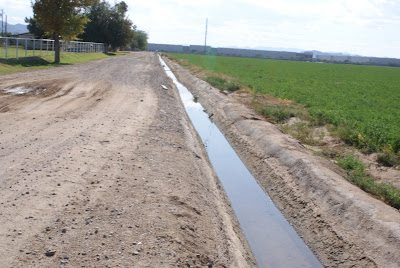 |
| olive grove at Queen Creek Olive Mill |
This past week I took relatives visiting for the holidays for a tour of the only commercially producing olive farm and mill in Arizona. This farm has 2100 olive trees of 16 different varieties, such as: Frantoio, Grappolo, Pendolino, Mission, Arbequina, Manzanillo, Kalamata. Queen Creek Olive Mill produces hand-crafted extra virgin olive oil (which means only mechanical means are used to obtain the oil) from olives that are pesticide free.
 |
| fallen olives |
The trees blossom in mid April, and by May the olives have formed and grow through the summer. The olives are harvested in mid October by using vibrating combs that release the olives onto tarps spread around the base of the trees. Olives that have fallen to the ground naturally are never used.
 |
| olive leaves |
The olives are pressed within 24 hours using only mechanical means, never heat or solvents. First the olives are defoliated of twigs and leaves and washed with water. Then the olives are milled to a paste in a hammer mill which crushes the olives, pits and seeds. A centrifugal decanter spins the olive paste, separating the flesh, pits and water from the oil. The oil is transferred to an oxygen-free steel storage decanter with a conical bottom where further water and oil separation naturally occurs.
 |
| mature olive tree |
Different varieties of oils are blended and then bottled to produce distinctive, boutique olive oil products.
One of their boutique products is a citrus oil blend which combines oil from citrus and oil from olives. Another is chocolate olive oil. Dark cocoa is added to olive oil, and this oil can be used for baking in cakes, or to top fruit or ice cream. Shelf life for olive oil is one year open or closed with no refrigeration necessary.
We all enjoyed this interesting tour, and got to taste several varieties of olives at the end.
As this New Years Eve dawns, I wish BLESSINGS FOR ALL IN THE NEW YEAR!














































